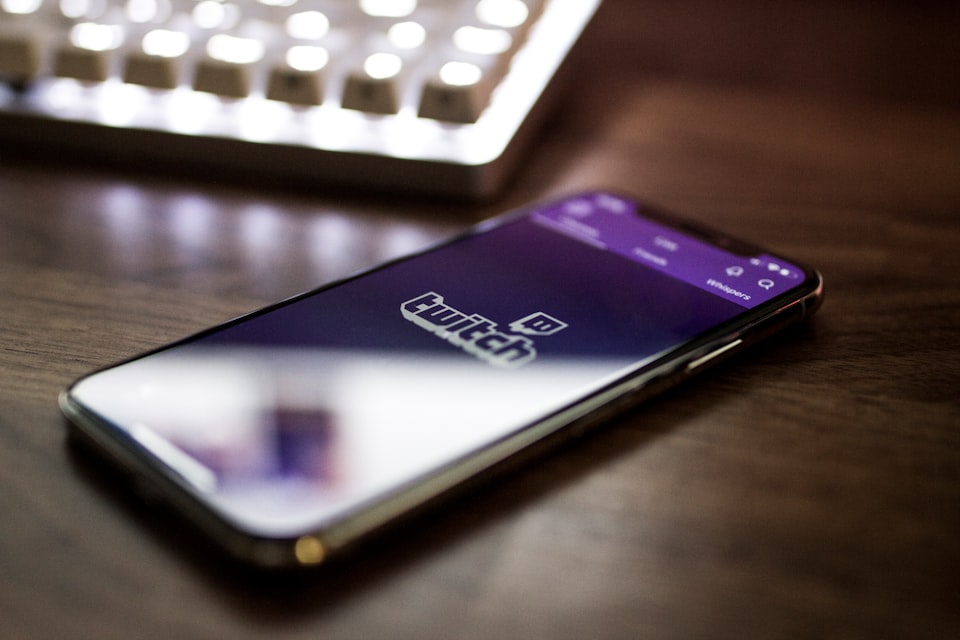How VC works — Investment Memo on Twitch

TL;DR
- Bessemer, who invested in Twitch in 2012, shares their internal memo on deciding to invest.
- We’ve created a template for founders to build up their own memo.
I want to share my learnings on how VC works and how entrepreneurs can take advantage of this knowledge. Not to screw VCs over, but to make the process more transparent for everybody, and to allow entrepreneurs to spend minimal time on fundraising, but instead building and growing their company.
Investment Memos
In this article, I’m going to be talking about investment memos and what they are. If you haven’t heard of them, they are internal documents that VCs write about the companies they invest in and also on the ones that they don’t.
The memo’s purpose is for a partner to present their case to the other partners on the opportunity and why the partnership should invest. It is also a useful document to record how a VC firm thought about the startup at the time of funding and reflect later to improve their investment strategies.
Investment Memo On Twitch
I recently bumped into an interesting investment memo from 2012, when Bessemer Venture Partners invested in Twitch. Ethan Kurzweil, a partner at Bessemer, writes in this post, in detail what they got right and what they got wrong in the investment memo.
You can read the article by Ethan Kurzweil by going here.
You can read the full memo here, and I’ve broken down the key areas of the memo. Here are the things that Ethan talked about the memo, to back his recommendation to invest.
The Team
If there’s one thing that investors will evaluate, then it’s the team. If the team isn’t experienced and skilled, most investors won’t back a company, even with a great idea. Here’s what Ethan had to say on Twitch’s team:
- “We liked the team. They were passionate about the business, solid on execution, and knew where to focus on building the organization.”
- Ethan wrote that “Emmett Shear was a first-time CEO, but up for the challenge.”
- Then he went on to talk about Kevin Lin, the COO, as a partner of Emmett, who is the visionary high flyer. “[Kevin] is a grounded, solid counterpoint to Emmett’s focus on high-level strategic thinking.”
Pattern Recognition
VCs doing pattern recognition is about seeing which patterns in a startup matter, and which don’t. The point of pattern matching is to have the experience to notice relevant and helpful signals, like:
- A team full of smart, resourceful, hard workers = good
- The game being developed is of a type that is unfamilar to the team, and the market for the game is somewhat crowded = bad
- Repeat founder as CEO = good
- Appears to wants us to invest only because of our money = bad
- and so on
In the Twitch memo, Ethan talks about Twitch as a marketplace, where streamers use gaming IP to create content which they then “offer” to spectators.
“Like many marketplace businesses, Twitch creates value for all constituents by allowing them to transact in a low friction environment and handles all monetization on their behalf. As a result, the company is able to capture the majority of the transaction value.”
Idea And Market Size
Back in 2012, the idea of people watching others play games was already a thing. But it was an unknown for everybody, including VCs, that watching other people play video games would become the dominant format of online video consumption. Later on, in 2019, YouTube published annual numbers on gaming video views on their platform:
- Minecraft videos brought in 100.2bn views
- Fortnite 60.9bn
- GTA 40bn
- Roblox 29.6bn
Ethan says in the memo:
“We did have a long existential debate internally about whether the overall market size was big enough — and believed this to be the key risk to the investment — but, unfortunately, there weren’t any definitive data points we could point to that informed the debate.”
Continuing here:
“[watching other people play video games] felt like a preexisting behavior, as before the Internet, it’s pretty natural to find a group of friends watching each other play a particularly engaging console game live in the living room. So why wouldn’t this experience eventually migrate online?”
Then he continues on the market:
“In drawing parallels between Twitch and the viral growth of online poker and e-sports in Asia, we convinced ourselves video games could not only become a spectator sport but that the market size was large enough for Twitch to become a massive site, which is necessary to have an effective advertising business.”
Metrics
The memo showed a bright green light for an investment in Twitch.
“Twitch has experienced phenomenal month-over-month growth since January 2011. The company is growing monthly uniques at an average of 9.6% and minutes watched per month by 16.0%. In addition, average daily unique visitors now watch over 75 minutes of content while on the site. Of the 18M monthly uniques. ~40% are in the US, ~40% are in Western Europe, and ~20% are in Asia.”
At this stage, they wanted to point out two metrics, monthly uniques and minutes watched. These were good enough to point out the growth trends of the service. There might be more interest in long-term engagement metrics, but since Twitch was still in its early stage, the two growth metrics were enough to take the leap of faith and invest.
What They Got Wrong
The belief at Bessemer was that Twitch was better off by partner with 3rd party for ad sales was wrong. Eventually, Twitch found better CPMs by selling its ads itself and building a team around that function.
On the financing needs, Bessemer had believed that the company could ramp up growth by not raising additional capital after B round (which was what this memo was for). A year later, Twitch ended up raising a C round. As Ethan says: “We try to forecast things like future financing needs, so this was a miss on our part.”
The competition from other streaming platforms was not thoroughly analyzed. They’d pointed out that own3d and Youtube would create some threat to scaling Twitch, but missed out on a critical issue: attempts to poach popular streamers would become a regular (and costly) occurrence.
As Ethan points out: “The team did a great job fighting and winning this battle through building the better product and attracting the biggest audience for live game viewing, but it was a constant distraction and more costly than we realized.”
Mobile was becoming more prominent in 2012, but Bessemer didn’t pay attention to that aspect at all. “We didn’t focus our diligence on Twitch’s plans for mobile. Luckily, the Twitch team was more on top of it than we were and built a highly popular mobile app for viewing.”
Conclusion of the memo
Ethan was suggesting to his partners that they’d invest. To conclude the memo, he wrote:
“Our Conclusion Would Twitch be big? It was too early to tell, but we were optimistic. The niche was unusual, but we couldn’t deny the traction and potential. For a young company, Twitch exhibited some powerful early indicators of success: a meaningful and growing customer base, a powerful network effect, and solid engagement. We wanted to invest.”
EGD Memo template
Early in 2020, I bumped into Y Combinator’s investment memo. The idea with the YC memo is that it flips this idea on its head.
In the YC Series A Guide, they share an investment memo template aimed towards founders. YC suggests sending your memo to investors in advance of a meeting to set the tone for the conversation. The idea is that by articulating your memo, you can:
1. “Clarify your own company’s pitch and story.”
2. “Incept your vision of the memo into their (potential VCs) brains.”
To give you an idea of what a memo may look like, I created a gaming startup version of the memo.
You can get the template from here.
Once you have the template, you should follow these steps:
- Start answering the questions in the memo.
- Once you have a robust set of answers, ask a fellow entrepreneur to read them and give feedback.
- Iterate your answers, based on a lot of people giving feedback. Take your time.
- Before meeting investors, you still want to build a deck. A memo is an excellent tool for drafting and outlining the deck. When you send the investor your deck, you can attach the memo.
Final words
To end this article, I have a message:
If a gaming VC is reading this, I would want to see one of your investment memos. It doesn’t have to be recent; it can be something that was written years ago.
Did you enjoy this article?
Here are a few articles which you might like.





